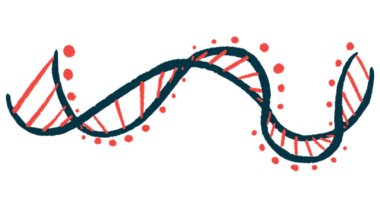Case study: ID’ing relatives may aid earlier CMT diagnosis
52-year-old man had long history of muscle weakness, walking problems, foot deformities

A 52-year-old man was diagnosed with Charcot-Marie-Tooth disease type 1 subtype A (CMT1A), after presenting a history of muscle weakness in his legs, foot deformities, and walking impairments.
The report illustrates how identifying relatives with similar symptoms may lead to an earlier referral in subsequent CMT cases in the same family.
The case, “The Impact of a Late Diagnosis: A Case of Charcot-Marie-Tooth Type 1,” was published in Cureus.
CMT is a group of inherited disorders affecting the nerves that control movement and sensation in the arms and legs, called the peripheral nervous system. Its symptoms include muscle weakness and atrophy (wasting and thinning), as well as complications from sensory nerve damage. More than 100 genes are known to be associated with CMT, with each linked to one or more disease subtypes.
Researchers in Portugal describe the case of a man with a history of progressive gait claudication — pain while walking due to reduced blood flow — since adolescence. The man also complained of lower leg muscle weakness and had progressive deformities that affected both feet. He was presented to the hospital in November 2021.
The man had surgery to his left foot in 1987, but no records were available and he couldn’t provide details. He was obese with abnormally high levels of fat in the blood, called dyslipidemia. He was being treated with atorvastatin, a cholesterol-lowering medication.
Reviewing family clinical history for CMT
Reviewing his family clinical history showed his mother, age 77, had similar symptoms since early adulthood. His daughter, sister, grandparents, uncles, and aunts were all healthy with no symptoms.
At his physical examination, he had pes cavus — a foot with an abnormally high arch — besides equinovarus feet, sometimes called clubfoot, a deformity wherein the feet turn downward and inward. He had no active movement in his toes and severe atrophy of the calf muscle.
He also had areflexic flaccid tetraparesis — muscle weakness and reduced muscle tone associated with absent body reflexes — in his distal muscles, which are those of the lower arms, hands, legs, and feet. As a result, when he walked, he bared his weight on the sides of his feet and could only walk with crutches.
His physicians suspected motor polyneuropathy, a condition affecting the nerves involved in movement.
A physiatrist prescribed orthopedic footwear, which he began wearing in April 2022, and “immediately noticed an improvement in his daily activities,” the researchers wrote.
In December 2021, he consulted with a neurologist and an electromyogram, which records muscle response to nerve stimulation, showed impairments that suggested motor and sensory nerve damage associated with loss of myelin, the protective fatty layer around nerve fibers.
A follow-up genetic analysis revealed an extra copy of the PMP22 gene, the chief cause of CMT1A, the most common form of CMT. The patient received counseling regarding his condition.
“The patient’s quality of life improved as a result of our fast approach and referral of this medical problem as soon as it was identified,” the researchers wrote. “In this case, identifying this patient and his ancestry with similar symptomatology allowed us to stay more alert to his daughter. By doing this, we can refer her earlier than this patient. It also prompted an investigation of his mother, which is yet to be done.”
“This case highlights the importance of family medicine in studying patients, not only as an individual but as part of a family,” they said.







